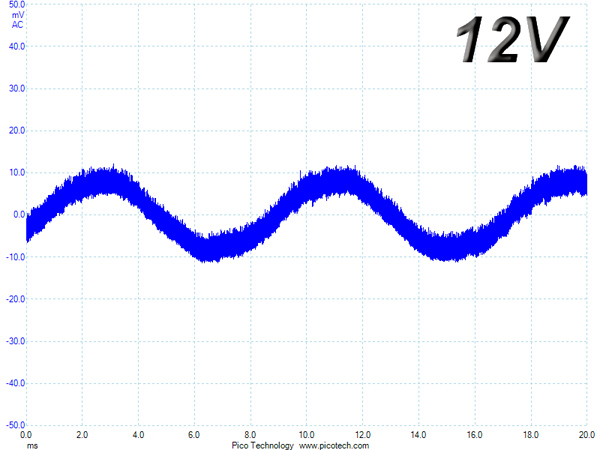Be Quiet! Dark Power Pro 11 1200W PSU Review
be quiet! says it's committed to building silent products, including the company's top PSU line, the Dark Power Pro 11. In this review, we will put the 1200 W Dark Power Pro 11 model to the test, which promises good performance and silent operation.
Why you can trust Tom's Hardware
Ripple Measurements
To learn how we measure ripple, please click here.
The following table includes the ripple levels we measured on the rails of the be quiet! Dark Power P11-1200 unit. The limits, according to the ATX specification, are 120mV (+12V) and 50mV (5V, 3.3V and 5VSB).
| Test | 12V | 5V | 3.3V | 5VSB | Pass/Fail |
|---|---|---|---|---|---|
| 10% Load | 7.0 mV | 4.9 mV | 9.0 mV | 9.7 mV | Pass |
| 20% Load | 48.3 mV | 8.5 mV | 10.1 mV | 12.5 mV | Pass |
| 30% Load | 27.5 mV | 7.2 mV | 11.0 mV | 14.0 mV | Pass |
| 40% Load | 23.0 mV | 7.8 mV | 11.1 mV | 16.1 mV | Pass |
| 50% Load | 24.1 mV | 9.7 mV | 12.2 mV | 19.2 mV | Pass |
| 60% Load | 30.6 mV | 10.2 mV | 12.2 mV | 24.0 mV | Pass |
| 70% Load | 27.3 mV | 11.2 mV | 13.5 mV | 26.2 mV | Pass |
| 80% Load | 22.8 mV | 12.7 mV | 14.3 mV | 32.5 mV | Pass |
| 90% Load | 23.0 mV | 13.2 mV | 14.7 mV | 34.1 mV | Pass |
| 100% Load | 23.3 mV | 15.0 mV | 17.2 mV | 34.5 mV | Pass |
| 110% Load | 25.2 mV | 15.4 mV | 17.5 mV | 35.4 mV | Pass |
| Crossload 1 | 41.5 mV | 9.5 mV | 15.1 mV | 14.4 mV | Pass |
| Crossload 2 | 23.2 mV | 12.3 mV | 14.1 mV | 25.0 mV | Pass |




Ripple suppression is very good on all rails except the 5VSB, where it is satisfactory at 35.4 mV at 100 percent load; however, we would like ripple suppression to be below 30 mV in all tests. We should stress that ripple suppression on the 5VSB rail isn't as critical as it is on the rest of the rails, so 35 mV of ripple won't cause any problems and is absolutely fine. But if be quiet! wants to beat its competition in this area, the company should offer even better ripple suppression at 5VSB.
Ripple Oscilloscope Screenshots
The following oscilloscope screenshots illustrate the AC ripple and noise registered on the main rails (+12V, 5V, 3.3V and 5VSB). The bigger the fluctuations on the screen, the bigger the ripple and noise were. We set 0.01V/Div (each vertical division/box equals 0.01V) as the standard for all measurements.
Ripple At Full Load




Ripple At 110-Percent Load




Ripple At Cross-Load 1




Ripple At Cross-Load 2




Get Tom's Hardware's best news and in-depth reviews, straight to your inbox.
Current page: Ripple Measurements
Prev Page Transient Response Tests Next Page Performance, Performance Per Dollar And Noise Ratings
Aris Mpitziopoulos is a contributing editor at Tom's Hardware, covering PSUs.